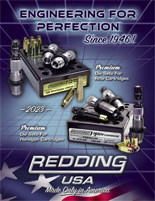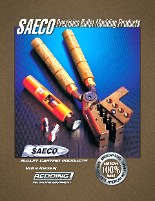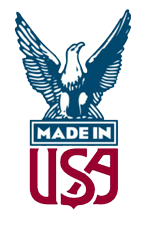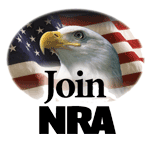We have designed the seat stem in our Competition Seating Die to contact the bullet ogive as far down as possible. Our Competition Seating Die features a bullet guide that is only .0005-.001" larger than bullet diameter. This tight fit between the bullet guide and bullet ensures that the bullet is seated straight in the case neck. It also limits how far down the ogive the seat stem can contact the bullet. If the ogive of your bullets aren't uniform, you may notice a slight difference in seating depth. Generally, this isn't a problem as modern bullets are very uniform. In rare instances, when using inexpensive bulk bullets, you may find that the bullets were made on several different machines and then blended.
If your loading press is worn, the ram may not stop in exactly the same spot each time you raise it. Obviously, this will cause variations in bullet seating depth. Although our instructions warn against it, raise the shellholder and adjust the outer, threaded die body to make light contact with the shellholder. (Make sure you keep the contact light, so you don't damage the die.) This creates a "dead length" seating chamber that is unaffected by where the shellholder stops. The only disadvantage to using the die adjusted this way, is that it may be awkward to read the micrometer if it ends up on the back side of the die.
Inadequate or excessive neck tension can also cause bullet seating depth variations. If you're using a bushing style sizing die, make sure you've selected the correct diameter bushing to size the case necks. Our current recommendation, is to select a bushing that is .001" smaller than the neck diameter of your loaded cartridges. (See the "bushing selection" newsletter in the "Tech Line" section of our website for more information.) As cases are fired over and over, their necks become progressively harder. This can cause the necks to "spring-back" excessively when they are sized, which reduces the neck tension on the bullet. Either anneal the case necks after several firings, or discard the cases and start with new, soft ones.
Heavily compressed loads can create problems when seating bullets. Our Competition Seating Die is not a powder compression die. The excessive force required to seat a bullet on a compressed load can damage the die and may cause seating depth variations. Switching to a faster burning or ball powder may eliminate the need to excessively compress the powder charge.
If you have any further questions, please feel free to call our technical support line at 607-753-3331.
Our current recommendation, is to select a bushing that is .001 to .002" smaller than the loaded cartridge neck diameter. For example, if the neck diameter of your loaded cartridges is .248", start with a .247 or .246" bushing. We've had to change our initial recommendation, because some of cartridge cases manufactured today have neck walls near the minimum SAAMI thickness. When using brass which is at the thinner end of the SAAMI spec. we have found the bushing which is .001" smaller will provide the best result.
To create precision reloads, you must start with cases of good quality. They should all be from the same manufacturer and lot number. A good measure of case quality is how uniform the neck wall thickness is. Cases with uniform neck wall thickness, will be of uniform thickness all the way to the base. This is important for accuracy, as the cases will expand uniformly upon firing, and contract uniformly when sized. Neck turning helps, but it's only a partial cure, as you can't turn the case wall all the way to the base. The Redding Case Neck Gauge is the preferred instrument for checking neck wall thickness and uniformity. Also note that the concentricity of a fired case only indicates how concentric your firearm's chamber is. It provides you with little or no information on the quality of the cases you're using.
Other factors that can improve concentricity:
- Lube case necks, even with TiN coated bushings.
- Partial size case necks. Sizing 1/2 or 3/4 of the neck seems to be the most popular.
- Try flipping the bushing over. We like to install them with the letters down to start with.
- Trim cases mouths square so they will enter the bushing straight. Don't forget to chamfer the case mouth, inside and out. This is very important as it eases the entry of the case mouth into the bushing, and the bullet into the case mouth.
- Anneal case necks. Cases that have been fired many times work harden and this causes excessive spring-back of the case necks.
The easiest way to determine the proper diameter bushing is to measure the neck diameter of several loaded or dummy cartridges with an accurate micrometer. (These dummy cartridges can be loaded with your old set of dies or a borrowed set.) Then, simply subtract 0.001" from the cartridge that had the smallest average measurement. This will allow for a slight amount of spring back and create a proper press fit for the bullet.
Another method of determining bushing size, is to measure the neck wall thickness of the cartridge cases with a ball type or tubing micrometer. Double this measurement and add the bullet diameter to calculate the neck diameter of a loaded cartridge. As above, subtract 0.001" from this figure to determine bushing size. This method is the least desirable of the two, as a ball micrometer is fairly expensive and more difficult to read consistently than a conventional micrometer.
If you're starting with new cases, the neck wall thickness can be determined as above with a ball micrometer, or you can seat boat-tail bullets in a few cases and measure their neck diameter. Generally, the neck diameter of new cases is small enough to hold a bullet without sizing. As a last resort, you can measure the neck wall thickness of the cases with a caliper. Be aware that you may not select the correct bushing on the first try when using a caliper to measure neck wall thickness, due to the reduced measuring accuracy of the caliper.
The above methods of determining bushing size require that the cases being sized have a fairly uniform neck wall thickness or have been neck turned. If the neck wall thickness varies more than 0.002", it may be necessary to use a bushing a couple of thousandths smaller than your calculations indicate, and then use a size button in the die to determine the final inside neck diameter.
After loading your first few cartridges, it's a good idea to test the grip that the case neck is exerting on the bullet. The simplest method to perform this test is to press the tip of the loaded cartridge against the edge of your reloading bench with moderate pressure. The bullet should not be seated deeper in the case if you have sized at least one caliber of the case neck. If the bullet is seated deeper in the case, switch to the next smaller size bushing and start again.
It has come to our attention through customer calls and our own use of the bushing style sizing dies that in certain instances, a given neck sizing bushing will produce a case neck diameter that can be several thousandths of an inch smaller than the actual diameter of the bushing. This idiosyncrasy occurs when the neck diameter of the fired case is a great deal larger than the diameter of the neck sizing bushing, such as occurs when factory chambers are on the large side of the tolerance range and the brass is on the thin side. Typically, we have not noticed any problems until the case neck is reduced more than 0.008-0.010".
Solutions include, increasing bushing diameter to compensate and/or the use of a size button. Reducing the neck diameter in two smaller steps by using an intermediate diameter bushing will also help. More concentric necks will also result using this method, as the case necks are stressed less during sizing. Don't forget to properly chamfer the inside and outside of the case mouths and apply a light coating of lubricant to the case necks before sizing.
To determine bushing range for standard calibers see "Bushing Range Chart"
If you have any further questions, please feel free to call our technical support line.
* We recommend that the neck diameter of the largest loaded cartridges measure at least 0.002-0.003" smaller than fired cases measured at the same location. This ensures that there is a clearance of at least 0.001-0.0015" all around the neck of the loaded cartridge. This clearance allows the case neck to expand and safely release the bullet upon firing.








